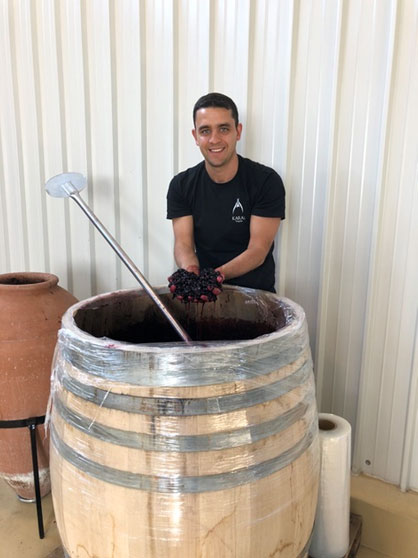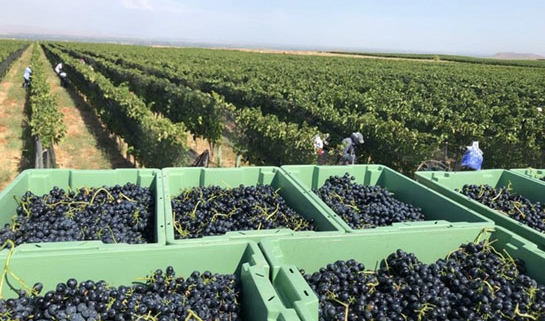Armenia: Noah’s legacy is in safe hands
A journey to Armenia through the stunning history of Karas winery, where Oenodia will be soon commissioning a brand-new unit.
 Where does the vine come from? Where did Noah plant the first one? Where was Vitis vinifera first found in its primitive form? Minor Asia, Georgia, Armenia? Fascinating questions!
Where does the vine come from? Where did Noah plant the first one? Where was Vitis vinifera first found in its primitive form? Minor Asia, Georgia, Armenia? Fascinating questions!
Let’s travel to Armenia a moment, where Oenodia will be installing the country’s first STARS unit next July. A discreet country, that has stayed out of the wine world’ turmoil, but whose oenological revival, initiated 20 years ago, is more than worth the interest.
With substantial export sales, Karas winery is a major actor of that rebirth. Gabriel Rogel, its adventurous Argentinian winemaker, now working for 7 years at Karas, has kindly agreed to share his experience and to give us some insight of the Armenian wine industry.
- What was Armenian viticulture back in the 90s?
At the fall of the Soviet Union, while Georgia was principally producing wine, viticulture was mostly dedicated to brandy in Armenia. The little amount of wine that was produced was typically entry-level sweet red and was sold locally”.
- In that context, how came the first spark of the Karas project?
Karas is all about a family coming back home. After a stunning history in Argentina, and fortified by the earlier success of Bodega del Fin del Mundo in Neuquén, the Eurnekian family decided to renew its roots within its homeland.
Back in 2002, the initial project entailed planting vines to provide premium grapes for the brandy industry. The region of Armavir happens to be the idyllic place, and its unique volcanic terroir prompted the family to try a couple fermentations, first with local grapes varieties, then planting international ones. The successful results of those trials were the spark to move forward and our first wine was released in 2010.”
- Do you intend to promote local grape varieties?
We do believe in local varieties and take advantage of their diversity in many blends, combined with international varieties.
More than most, the Areni is definitely the emblematic red variety in Armenia. Its delicate profile and herbal freshness show a great potential that we keep on mastering, year after year, by selecting our own plant material from older vines.
Another major red variety is the Sireni. Colorful and full-bodied, it makes a singular synergy blended with the Areni.
- How does this choice influence your offer and how does it fit with your sales expectations?
Both our blends and mono-varietals are a success, on the national as well as on the international market, and it’s actually difficult to keep up with the demand.
If 60% of our sales goes national, we intend to swap that figure to the export market in a few years. The Armenian diaspora is widespread, especially in the USA and Western Europe, and especially faithful to Armenian wines. That’s obviously the channels we’re aiming at.
- What’s your vision for the Armenian wine industry in the near future?
Armenia holds many terroirs and varieties, and we’re constantly learning to make the most of its incredible potential.
Wine history is here more than anywhere, and today we are reinventing winemaking to share, worldwide, the best our terroirs have to offer.
Karas in not alone. New investors, renown consultants and diligent winemakers have been working hard lately and all contribute to the rebirth and recognition of Armenian wines.
Gabriel Rogel, winemaker at Karas Winery, Armenia, interviewed by Aikouch Tchilingaryan, director of Eurodia Kuban, Russia.



